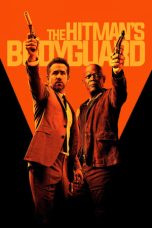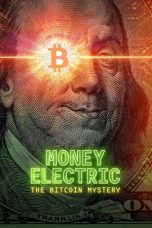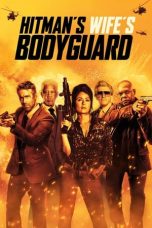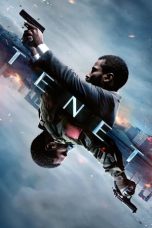- Source: Scottish National Liberation Army
The Scottish National Liberation Army (SNLA), nicknamed the Tartan Terrorists, is a Scottish nationalist paramilitary group which aims to bring about Scottish independence from the United Kingdom. The group was founded in 1980 by Adam Busby, a former soldier from Paisley after the 1979 devolution referendum, which the organisation claims was fixed.
The SNLA has been condemned by the UK government, along with Scottish National Party (SNP) leader John Swinney, who described the organisation as people who "have no interest in Scotland or the Scottish people", and that its members were "not nationalists, they are criminals plain and simple."
History
= Formation
=The SNLA was founded by Adam Busby, a former soldier who served in the Argyll and Sutherland Highlanders in 1980. The organisation was formed in the wake of the 1979 Scottish devolution referendum,
which despite resulted in the majority of voters (51.6%) supporting the establishment of a devolved parliament in Scotland, this never came to fruition as there was only a 64% voter turnout, with the Yes vote representing only 32.9% of registered voters in the referendum, which did not meet the requirements for at least 40% of voters voting in favour, per the Scotland Act 1978. Busby felt that this outcome called for a more forceful approach towards achieving independence.
= Activity
=The group started their armed campaign in March 1982, when a letter bomb was sent to the House of Commons addressed to John Nott, the then-Secretary of State for Defence. A man had telephoned the Glasgow offices of the Scotsman, claiming that a bomb had been sent to Nott by the SNLA in response to the newly announced changes to the UK's trident programme. The bomb subsequently arrived at the House of Commons on 17 March, which was later reported after being discovered by a Ministry of Defence member, who narrowly escaped detonating the bomb. The device was initially thought by the media to have been the work of Irish republican paramilitaries, such as the Provisional Irish Republican Army (IRA), as it coincidentally arrived at the commons on St. Patrick's Day. To coincide with the 1982 Glasgow Hillhead by-election the following week, two further letter bombs where sent to two separate Scottish Social Democratic Party offices in Edinburgh and Glasgow; both devices were subsequently diffused by the authorities upon discovery by office staff. The group later claimed responsibility for a letter bomb that was posted to Queen Elizabeth II at Buckingham Palace, along with two further letter bombs to two Conservative party offices in Edinburgh and London, and an incendiary device that was reportedly planted in the Scottish Assembly building. Scotland Yard claimed no such device had arrived at Buckingham palace, and purported the device that was sent to the London Conservative Party office to have been a hoax. In November, the group claimed responsibility for a firebomb attack at that took place at a Conservative party office in Glasgow on 8th November. On the 24th November, the Glasgow offices of the Press Association reported that it had received a written letter from the group, who claimed responsibility for a letter bomb that was sent to then-Secretary of State for Industry Patrick Jenkin, stating "SNLA will avenge the workers in Craigneuk" in response to a proposal made by the British Steel Corporation to partially close a steel mill in Craigneuk, North Lanarkshire, costing 427 jobs. The letter bomb was discovered by Jenkin's secretary, and was later diffused by police. Following this incident, security was tightened for an upcoming visit to Edinburgh from then-prime minister Margaret Thatcher, who was due to attend a private dinner taking place in the Edinburgh Assembly rooms in celebration of the centenary of the Scottish Conservatives.
In 1983, the group sent letter bombs to public figures including Diana, Princess of Wales, and Margaret Thatcher. The device sent to Thatcher was posted to a hotel located in North London, where a Conservative Party Conference was due to take place, and was discovered and opened by parliamentarian Robert Key, but there was no explosion. Another letter bomb, targeted at Princess Diana, was posted to the then-Lord Provost of Glasgow Michael Kelly to the Glasgow City Chambers, where Diana was due to visit. The letter ignited after being opened by Kelly's secretary, Eric Hamilton, who at the time was in his office interviewing a woman who was set to take part in a welcome event for the arrival of HMS Glasgow to the city the following day. Hamilton later received hospital treatment for minor burns to his arm caused by the ignition from the device. Another letter bomb was posted to then-Secretary of State for Employment Norman Tebbit, which ignited after being opened in the Westminster offices of the Department of Employment by a 19-year-old civil servant. The device contained a written letter, which although was largely destroyed by the explosion, was found to bear 'SNLA' on the remains. The same day, a letter bomb was posted to then-Secretary of State for Scotland George Younger, which failed to ignite. Busby fled to Dublin in 1983 after the letter-bombing campaign; he was jailed in connection with that campaign in 1997.
In 1985, the group claimed responsibility for an incendiary attack that occurred at the Ministry of Defence Headquarters in Whitehall, London. The attack was carried out by planting a miniature device in an empty fifth-floor sub basement inside the building; the fire lasted for more than six hours and caused serious structural damage, estimated at around £700,000.
In April 1986, the group phoned the Press Association following a bombing that occurred at a British Airways office in Oxford Street, London, claiming responsibility for the attack. The caller provided detailed information on how the bomb was constructed, and clarified that British Airways was targeted in response to an attempt by the UK government to completely privatize the company, which the group believed would result in significant job losses, along with total withdrawal of airline services in remote areas of Scotland. However, despite this claim, the media did not explicitly name who was claiming to be responsible for the bombing, until the following day when the issue was brought up in the House of Commons by Giles Shaw, who acknowledged calls received by the Press Association from the SNLA, along with English terrorist group the Angry Brigade, who claimed responsibility for the bombing "in retaliation for Britain's involvement in the American bombing of Libya." An investigation carried out by the Metropolitan Police anti-terrorist branch found no evidence that the bombing was linked to Libya, and both claims from the SNLA and the Angry Brigade were later discounted by police.
In 1993, organisation member Andrew McIntosh was sentenced to 12 years in prison for conspiring to coerce the British government into establishing an independent government in Scotland. The High Court in Aberdeen heard that McIntosh had orchestrated a campaign of fear tactics, which involved placing hoax explosives outside oil industry buildings and mailing genuine letter bombs to the Scottish Office in Edinburgh. At the time of his arrest, McIntosh was also found to be in possession of a Kalashnikov rifle. After serving six years, McIntosh was released in 1999. He was rearrested for firearms possession on 9 October 2004, the same day Queen Elizabeth II appeared at the opening ceremony of the newly completed Scottish Parliament Building, and committed suicide whilst in custody on 18 October, just hours before he was due to reappear in the Aberdeen Sheriff Court for his offences.
In 2002, Cherie Blair became a target of a renewed campaign by the SNLA when she was sent an anonymous parcel containing a vial that was crudely labelled as containing aromatherapy oil, but which on investigation proved to contain caustic acid. In addition, a renewed letter bomb campaign was waged against Scottish politicians, parcels were recovered after a man claiming to be from the SNLA made an anonymous phone call to Scotland Yard. Professor Paul Wilkinson opined at the time: "The SNLA has surfaced from time to time."
In 2006, it was reported that the group was being investigated by the Home Office and Strathclyde Police, after the group had sent an e-mail to the Glasgow offices of The Sunday Times, threatening to poison England's water supplies. The e-mail stated: "Our aim is to poison water supplies in England, not in the entire UK. We have the means to do this and we shall. This is a war and we intend to win it." In addition, it was reported that Adam Busby may be targeted for extradition to the United States to face terror charges, following a series of e-mails to the country about how to contaminate US water supplies.
In January 2008, two men, Wayne Cook and Steven Robinson were convicted in Manchester of sending miniature bottles of vodka contaminated with caustic soda to various public figures, which included Blackburn with Darwen councillor John Wright, and Scottish Daily Express journalist Myra Philp, and threatening to kill English people "at random and with no discrimination or compunction" by poisoning English water supplies, echoing a previous threat made in 2006. The poisoned bottle sent to Philp was accompanied by a letter signed 'SNLA' stating "This is necessary to convince the British Government that we will lethally poison England's water supplies, if they do not withdraw totally from Scotland." Cook and Robinson were each sentenced by the Manchester Crown Court to six years in jail for these offences.
In June 2009, Adam Busby Jr., the son of the organisation founder, was jailed for 6 years for sending a total of 6 packages to various political figures, including First Minister Alex Salmond, Liberal Democrat MSP Mike Rumbles and Glasgow City Council. The packages contained shotgun cartridges and threatening notes. Police linked the crimes to Busby after calls made to journalists claiming SNLA responsibility for the actions were traced to his mobile phone.
In July 2010, Adam Busby Sr. was sentenced by an Irish court to four years in jail after being convicted in June 2010 of making hoax bomb threats against transatlantic flights.
Busby was released from jail on 21 March 2014, and was reported at the time to be living in a Dublin hostel, banned from internet access, and was awaiting verdicts about possible extradition to Scotland and the US. In February 2015, Busby was extradited back to Scotland. In October of that year, however, a Glasgow court ruled that Busby, who at the time was diagnosed with multiple sclerosis, was medically unfit to be tried over multiple bomb threats. In 2017, the Sheriff court of Lothian and Borders in Edinburgh ruled that Busby, by then 69, was too ill to be sent to the US, as multiple sclerosis was at an advanced stage.
Associated organisations
The Scottish Separatist Group (SSG; Scottish Gaelic: Comunn Dealachadh na h-Alba) has been described as the political wing of the SNLA. The SSG was formed in 1995 by former members and supporters of the SNLA, who wanted to reverse English immigration into Scotland and promote Scottish Gaelic as the country's national language.
In 2006, the Home Office launched an investigation into the SSG under the Terrorism Act 2006 after the party had allegedly published detailed instructions on how to contaminate English water supplies. The published material was said to provide instructions on how to craft and use an unnamed substance, which was described as a "WMD" in the publication, to permanently poison the water supplies of major UK cities, with the aim of "destroying the economic, political and military power of the state by poisoning and contaminating the drinking water supplies of any major city."
References
External links
Attacks attributed to the SNLA on the START database
Kata Kunci Pencarian:
- 28 Februari
- George S. Patton
- Konflik Irlandia Utara
- Daftar organisasi lingkungan
- Scottish National Liberation Army
- Liberation Army
- Irish National Liberation Army
- Adam Busby
- Scottish nationalism
- Timeline of Irish National Liberation Army actions
- List of terrorist incidents in London
- List of historical separatist movements in Europe
- Diana, Princess of Wales
- Free France
Bolero: Dance of Life (1981)
Money Electric: The Bitcoin Mystery (2024)
Hitman’s Wife’s Bodyguard (2021)
6 Underground (2019)
No More Posts Available.
No more pages to load.














